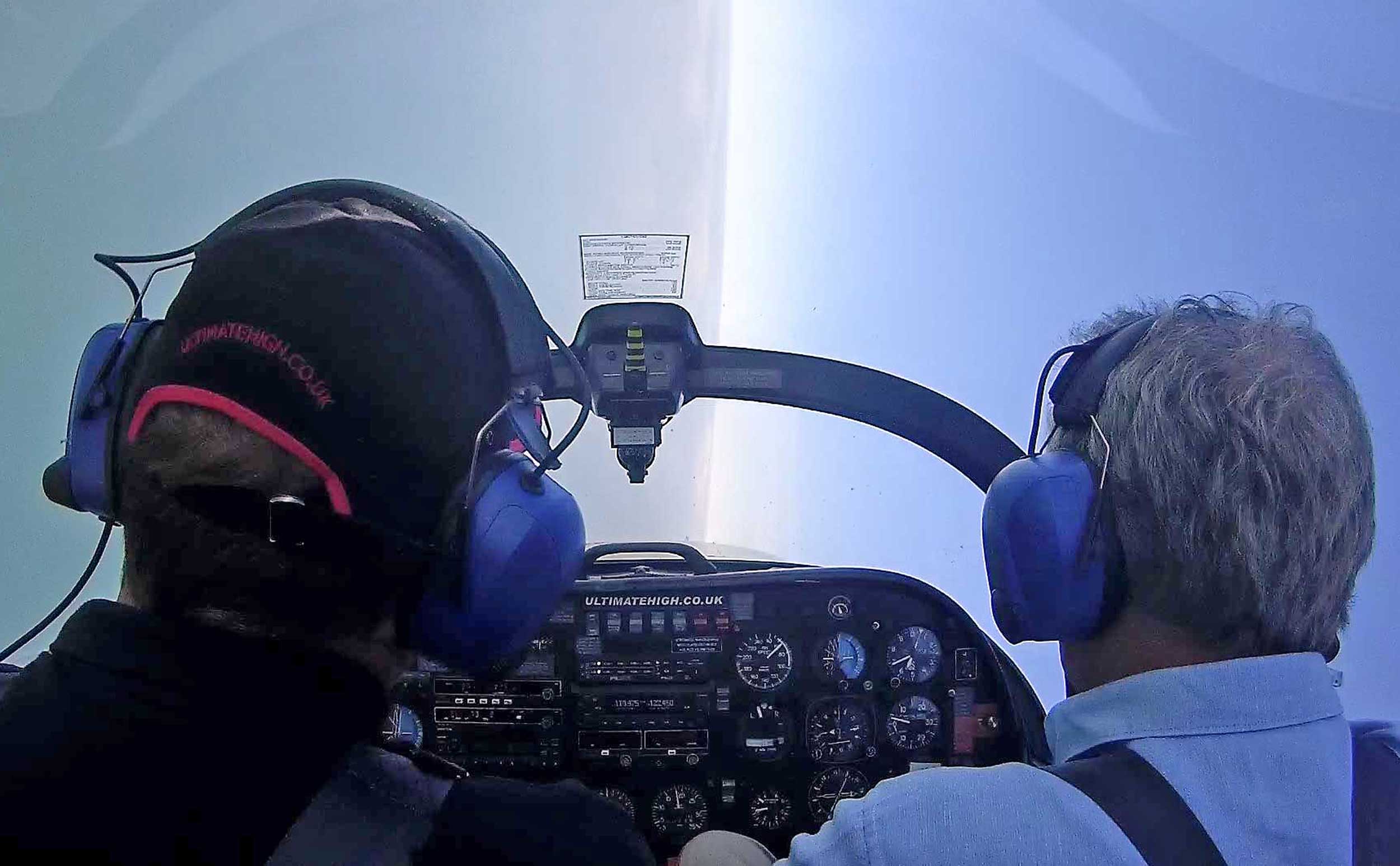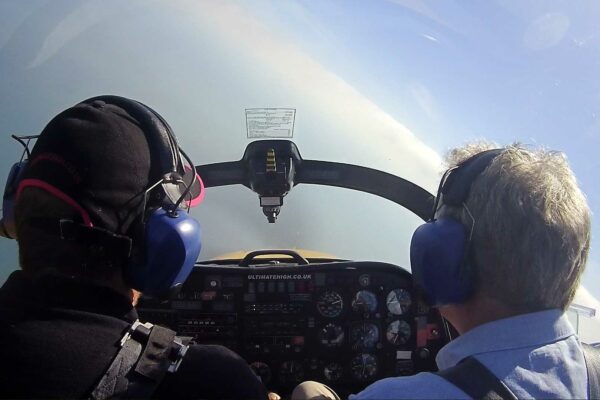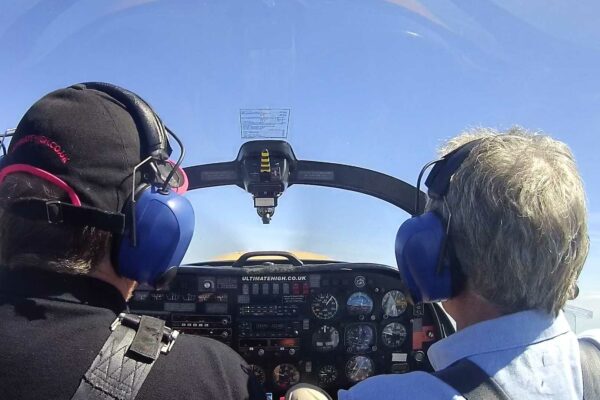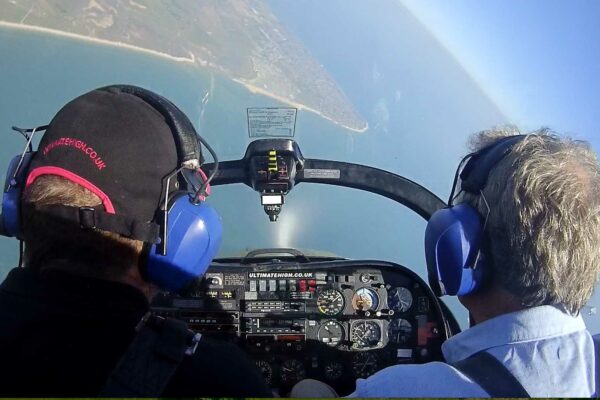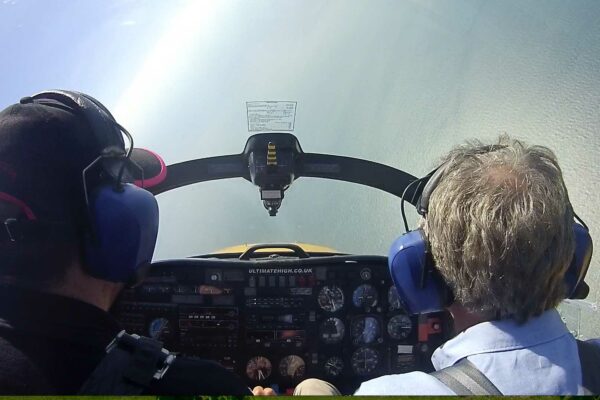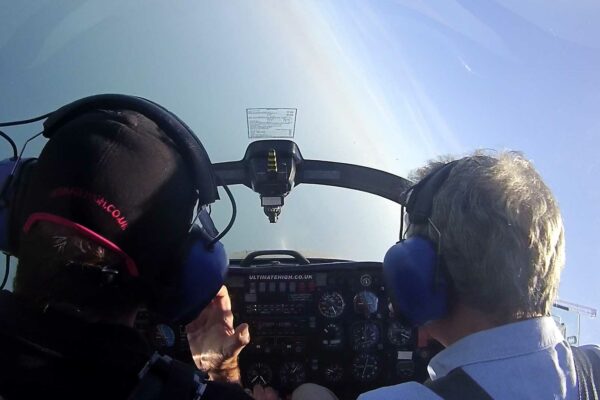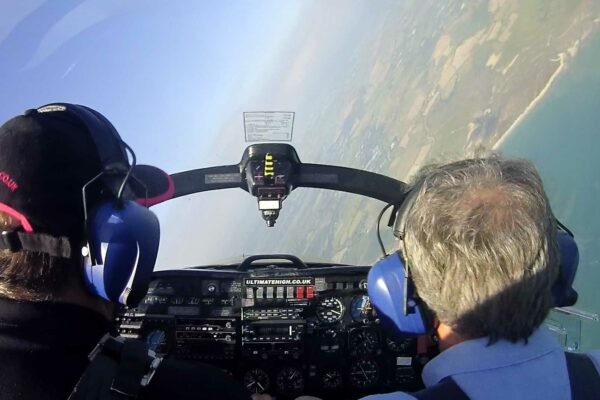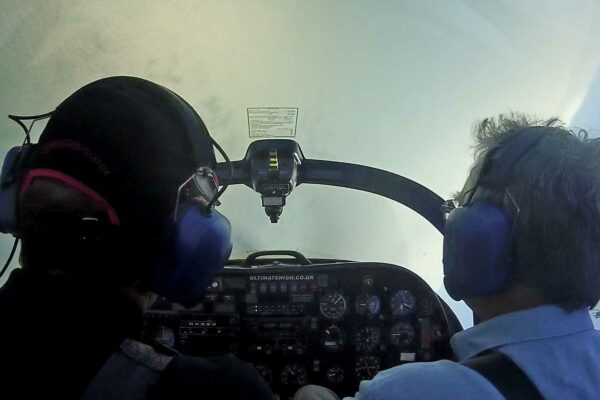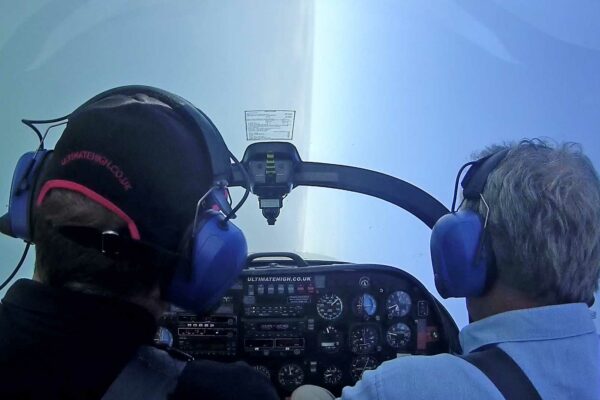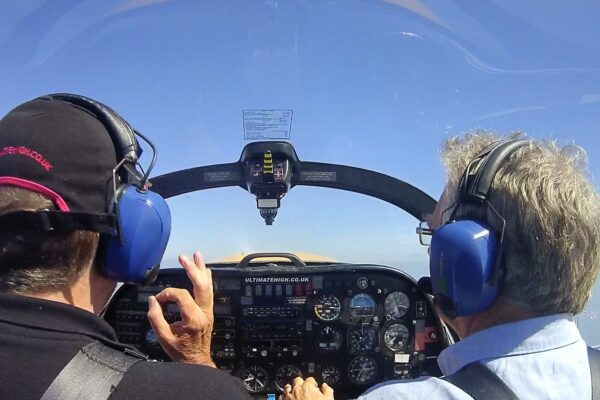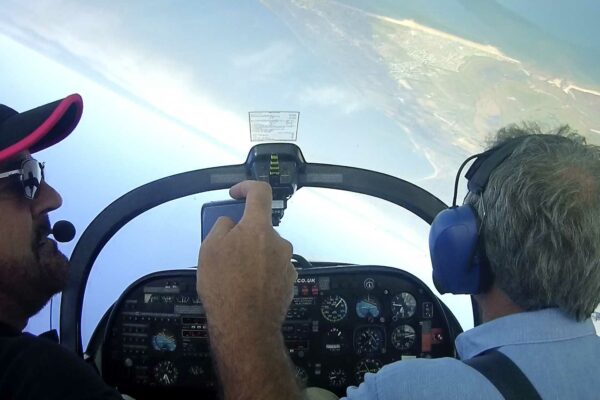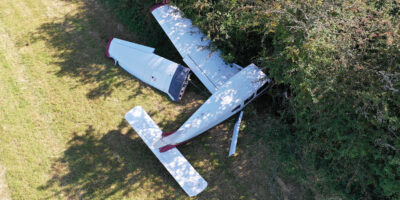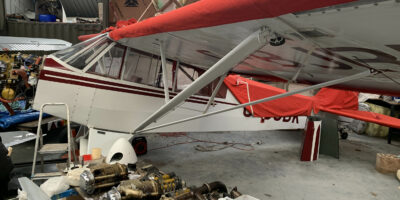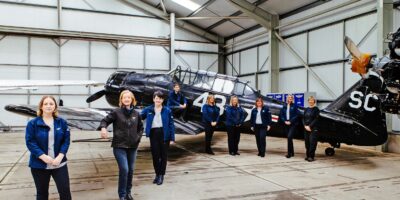It’s with that in mind that Goodwood-based Ultimate High has developed a UPRT course for General Aviation. Ultimate High is well known for its max adrenalin tailchasing sorties and aerobatic routines including the ‘Utter Nutter’, mostly aimed at non-pilots looking for an extraordinary thrill. But it also has a serious side and that’s having played a major role in developing the latest regs for teaching UPRT for airline pilots.
The work that’s gone into those regs has filtered down to Ultimate High’s course for GA – and decisively changed the emphasis. Gone are the extreme manouevres threatening the stability of your breakfast. Nowadays, it’s about recognising the early signs that you’re about to depart from controlled flight and doing the right thing to avoid it.
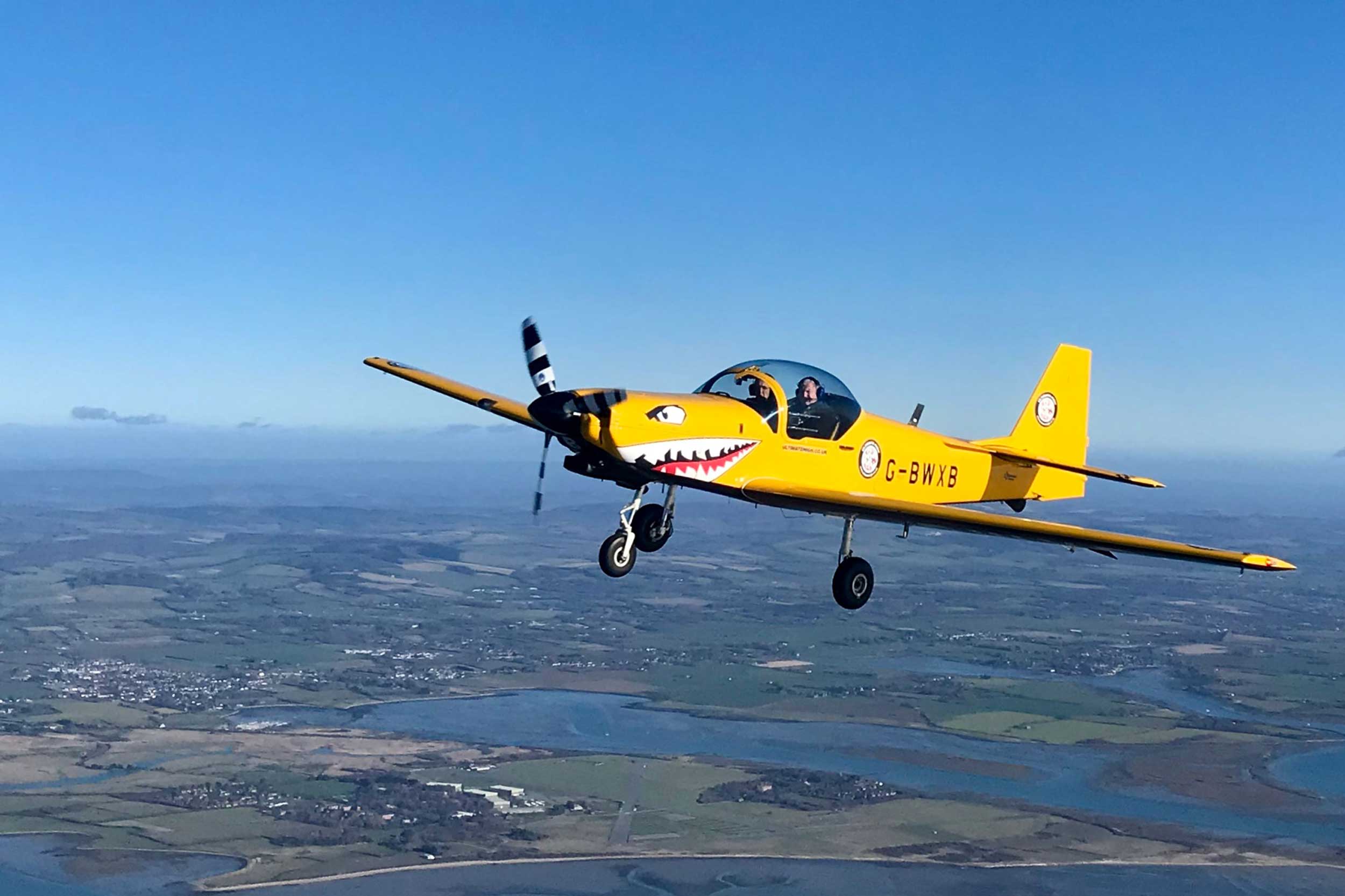
Ultimate High’s Slingsby T67 used for UPRT
The first thing you’ll notice is that Ultimate High’s training aircraft is the Slingsby T67 with side-by-side seating. Next, helmets are not worn and neither are military-style flying suits. This is all about normal, everyday flying.
I flew with Mark Greenfield, ‘Greeners’, who founded and runs the business. He starts with a ground briefing based on a Powerpoint presentation.
“First and foremost this is a confidence builder,” said Mark. “We want you to understand the mantra of Avoid – Recognise – Recover. To do that we’re going to expose you to a variety of attitudes and deviations from 1+g.
“We’ll implement and practice a simplified stall and upset recovery technique and develop a resilience to startle and surprise. We’ll build layers of protection against flight upsets and develop confidence and trust having successfully recovered from a variety of stalls and upsets in a ‘real’ environment.”

DC, left, flying with Ultimate High’s Mark Greenfield. One of us is looking confident and competent… and I’m wondering where my stomach has gone
The full course is about three hours of groundschool going through the various reasons for an upset, plus a thorough briefing before going out for two flights. Two, because most pilots will become mentally maxed out during the flight and there comes a point with a rest on the ground is beneficial.
The groundschool is comprehensive, covers much more than the PPL, has elements of what can be learned from the airline pilot cockpit such as Pilot Monitoring and Crew Resource Management.
So, if you’re a pilot but on this flight a passenger in the front seat, you should be monitoring what the pilot is doing, how the aircraft is responding and noticing things that the Pilot Flying might just be too busy to take in. It’s a bit like being an extra pair of eyes looking out, which we all do, but also looking in, particularly at times of high workload.
Mark believes UPRT should be considered as an integrated component of pilot training, not as a standalone ‘bolt-on’. A considerable amount of time is spent of how to avoid flight upsets, broken down into three causes:
- Environmentally induced such as turbulence
- Systems anomalies such as sensor data
- Flight control such as pilot-induced upsets.
Crucial to everything is understanding Angle of Attack, not just in a climb but in all attitudes of flight, and a considerable part of the groundschool is spent on this. It’s what lies behind the AF447 accident (see below) and many others.
There are plenty of studies out there which break down upsets and give detailed responses to each. Mark thinks the chances of a pilot being able to recall all that detail in a moment of crisis are minimal, so he has boiled it down to a simple process:
- Upset? Recognise and disconnect the autopilot if ‘on’
- Push all controls centrally forward
- Roll so wings are level with the horizon
- Thrust – adjust throttles (and drag) as required.
That’s U-P-R-T for short. Should be easy enough to remember, right. Ok, let’s find out, let’s go flying…


